#multi racial???
Explore tagged Tumblr posts
Text
Am I the only one who sometimes thinks about how their ancestors were?
Did a boy in 1618 Poland had my hands? Did his mother had my smile? Was there a young girl in 1200 BC China who loved stories the same way I do? Had her grandchild the same eyebrows as me? Will a baby from 120 Indonesia be found with a little bird figurine, the same I had as a baby? Was there a young polynisan woman with my eyes sailing around 1756? Maybe they'll someday find a burial with my great great great great grandmother, pretty stones and her 'best female friend'.
I don't know. I probably never will. But I like to think that I'm not the first one in my family.
#history#multi racial???#bi racial???#I don't understand the American race system#poetry#ancestors#ancestry#they're me#and i am them#this is the cycle of life guys#and it is beautiful#so embrace it
4 notes
·
View notes
Text
The idea of Bonnie representing femininity when she’s so far removed from engaging in “feminine” things she once enjoyed to play the savior of everyone… is very funny lol
#yall just be talking to defend your faves and that’s fine but never considers the multi-layered racial dynamics towards Bonnie outside of u#deserve better 💕#bc what did Hayley do that makes her not like the other girls lol#bonnie bennett
20 notes
·
View notes
Text
it is absolutely fucking insane that there is 0 religious presence throughout the entire series. why is the future COMPLETELY irreligious. you’re telling me no buddhist shrines survived world war 4? the kaaba completely demolished? jerusalem completely nonexistent? catholic missionary churches completely erased from south america?
#but then again. marissa does a botched job at creating a multi-racial “post racial” future so maybe its a blessing in disguise#if she tried to tackle religion...we would've never gotten this series#mine#the lunar chronicles#im saying this as a nonpracticing nonserious muslim#but considering the fact that religion plays such a massive role in culture and everyday life#the fact that tlc universe is completely devoid of it is crazy#this does remind me of 80’s anti communist/ussr propoganda where the ussr is evil cause the state was atheist#and marissa did grow up then. not me tho god bless 💪🏽
15 notes
·
View notes
Text
i feel like i slipped into the fucking twilight zone me and my coworkers were chatting in the breakroom about how our area never gets directly hit by hurricanes and i was telling them about how we're in a lucky spot bc the currents deter hurricanes from one direction and the land deters them from the other and i was about to go into how mangrove forests are a natural flood barrier but then the guy from the deli started talking about MAGIC and how "the indians" must have used magic on the land to protect it from hurricanes and then a cashier (who i thought was very cool and sensible before this) AGREED and said that there was definitely some "native american voodoo" going on and it made me feel insane. i just talked about tampa bays natural hurricane deterents (which is a very fascinating subject btw) and you guys are being racist about it???? what the hell is going onnnnn

#tw racism#that was like. cartoonish levels of racism. what the hell??????#they werent even White the deli guys is black and from panama and the cashier is white-passing multi-racial hispanic#the florida general public.......
7 notes
·
View notes
Text
#debating blackness#lmsu#blackness#black folks#mixed heritage#biracial#black diaspora#multi racial#black natives#black indigenous#cherokee heritage#black family#black american family#passer#passers#passe en blanc#pass for white
4 notes
·
View notes
Text
A personal gripe is how "car friendly design" has become a catch-all to describe anything from "this store has an oversized carpark" right up to "demolishing a neighbourhood to run a freeway through it*". Like, there's a tangible difference between "car friendly", "car first" and "human hostile" design and I feel like transit advocates should distinguish between them.
#*not to mention the usual racial violence of that freeway construction#like the problem isn't that you built a freeway it's that you displaced hundreds of POC to benefit white suburbanites#lmao shut up haz#car first design is more of a pervasive problem than car friendly design imo#like why do Multi level carparks have no walkways? because more car space is the priority
6 notes
·
View notes
Text
Peace
You earn your Right to wear a Universal Flag pin.
Taken from IG @thefivepercentnation
#nation of gods and earths#supreme mathematics#five percent nation#allah school in mecca#5% nation of gods and earths#father allah#black women#black men#black people#latinos#biracial#multi racial#working class
3 notes
·
View notes
Text
I'm an actress and I don't want female/black/multiracial James Bond, I don't want POC The Little Mermaid, I don't want female Batman.
I want stories about women, preferably important females in history, being written specially for them, repressenting what it is like to be a woman, showing our realities. I want female superheroes, female heroines, female stars, female queens, female police agents... Not by recycling men's stories, but by writing our own.
Similarly, I want the same when it comes to POC and multi-racial people. I want stories that talk about African and Asian culture and reflect it, made for those characters who aren't white, who we barely know anything about, showing us their culture, their societies... Whether they live in tribes, or in poverty, or in a collective culture, or having to work 200h a week to support their families. I want REAL multi-cultural stories. Not recycling things made for the white.
7 notes
·
View notes
Text
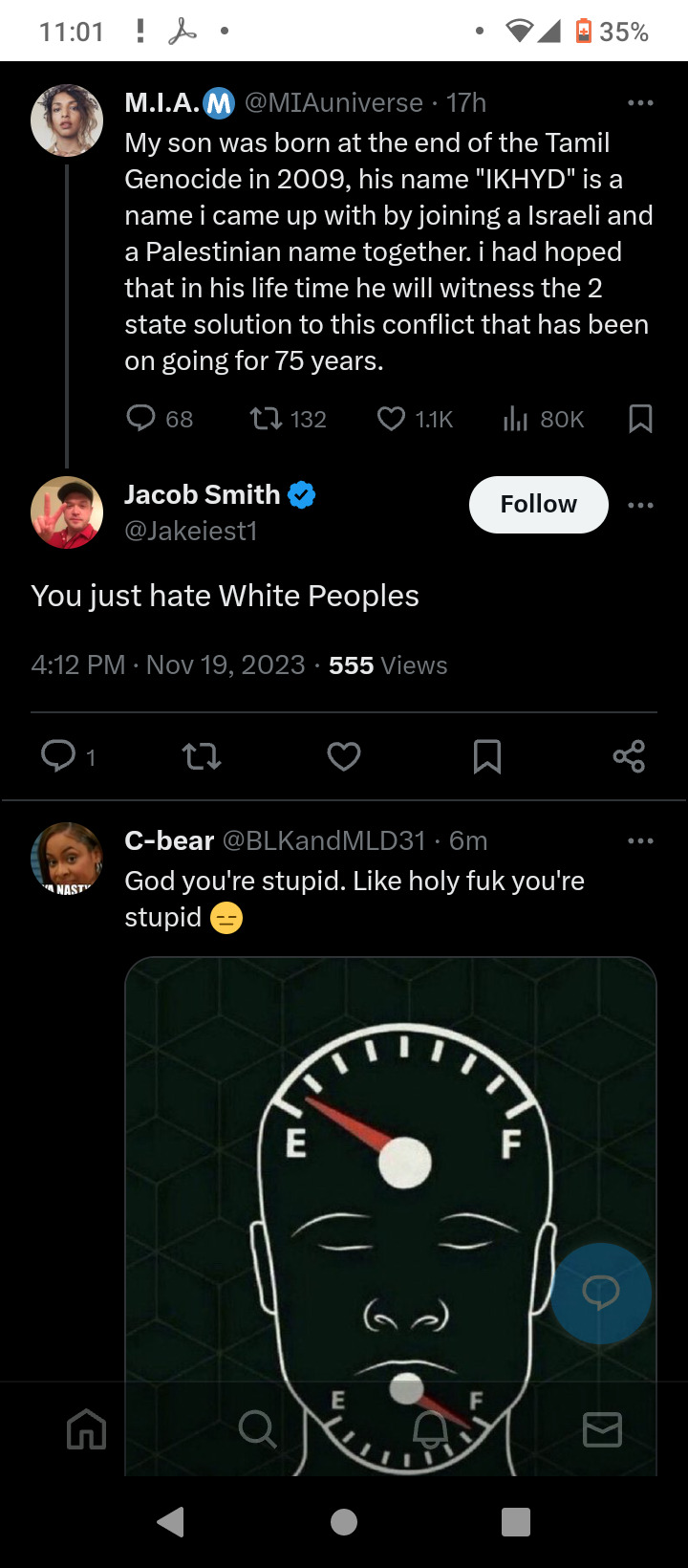
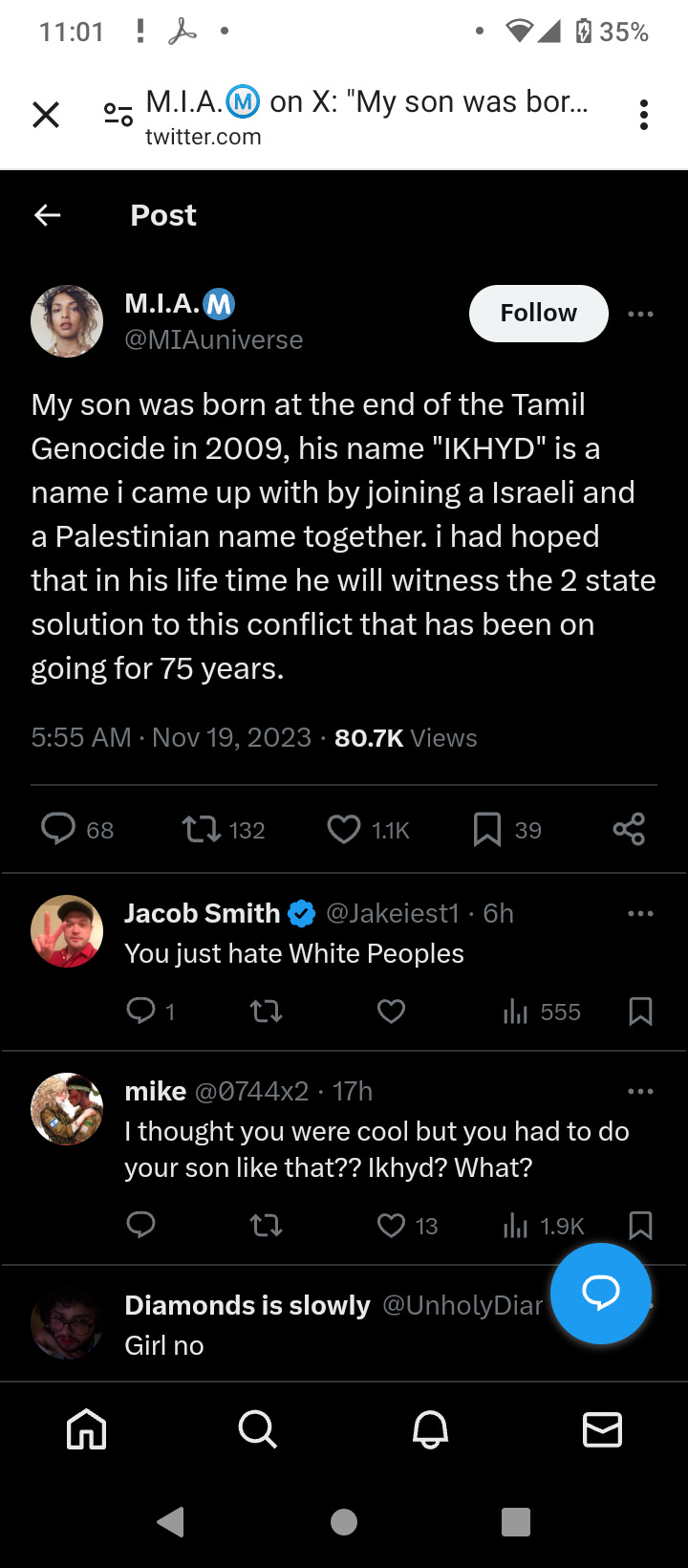
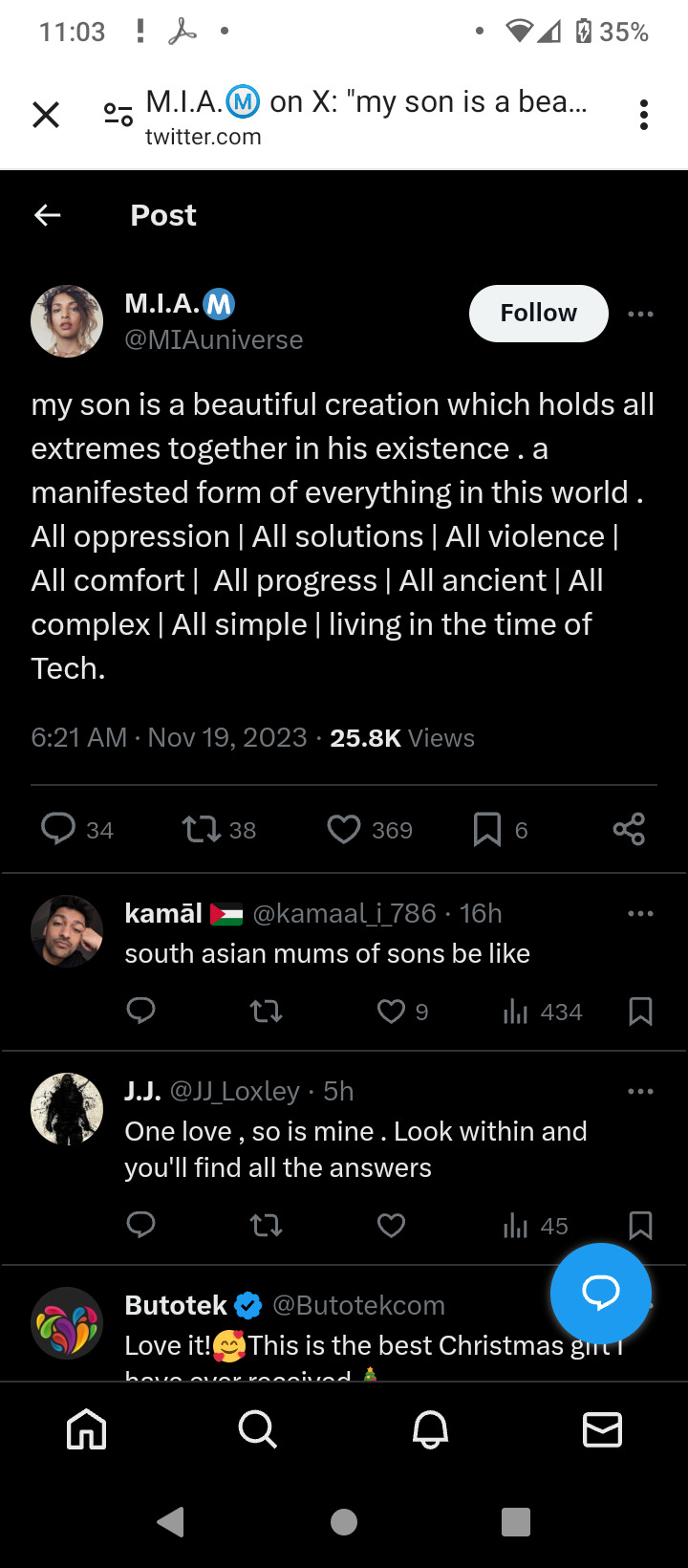
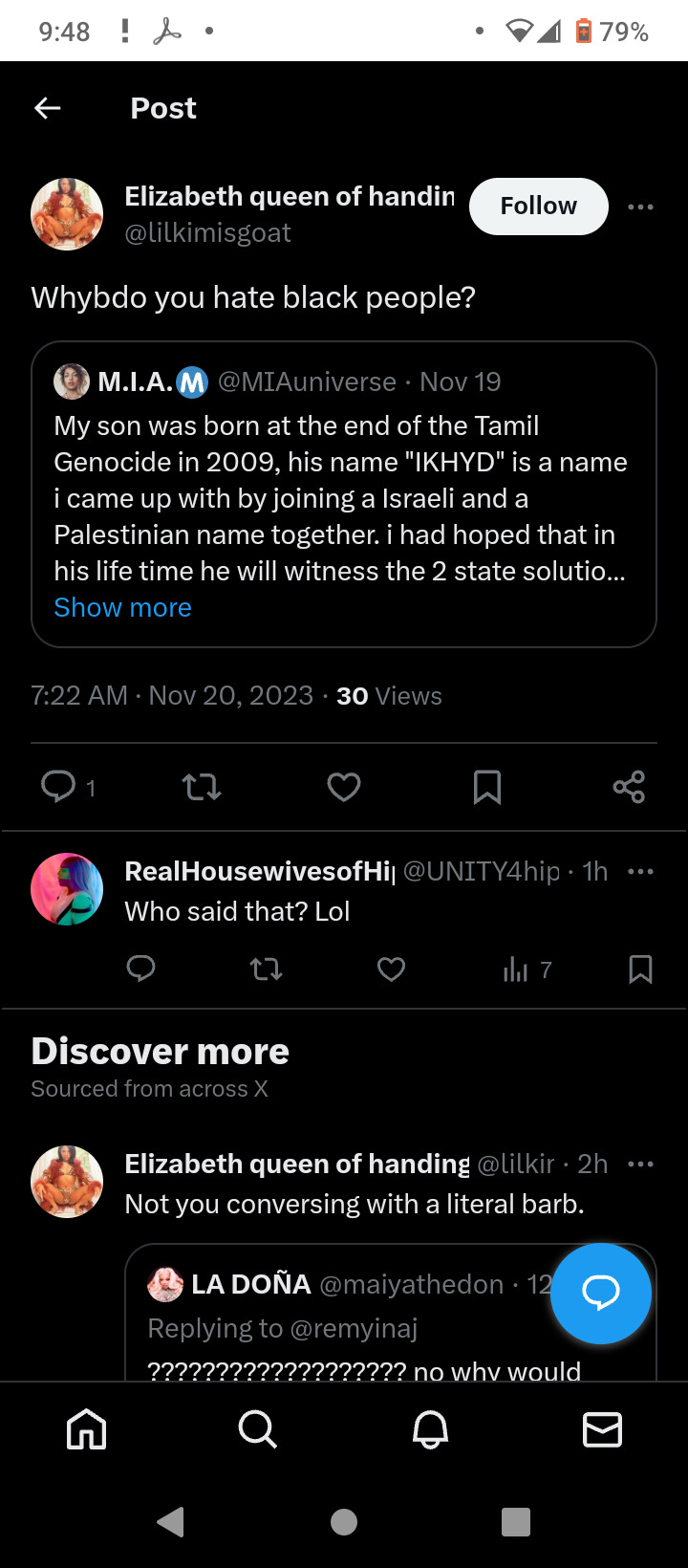
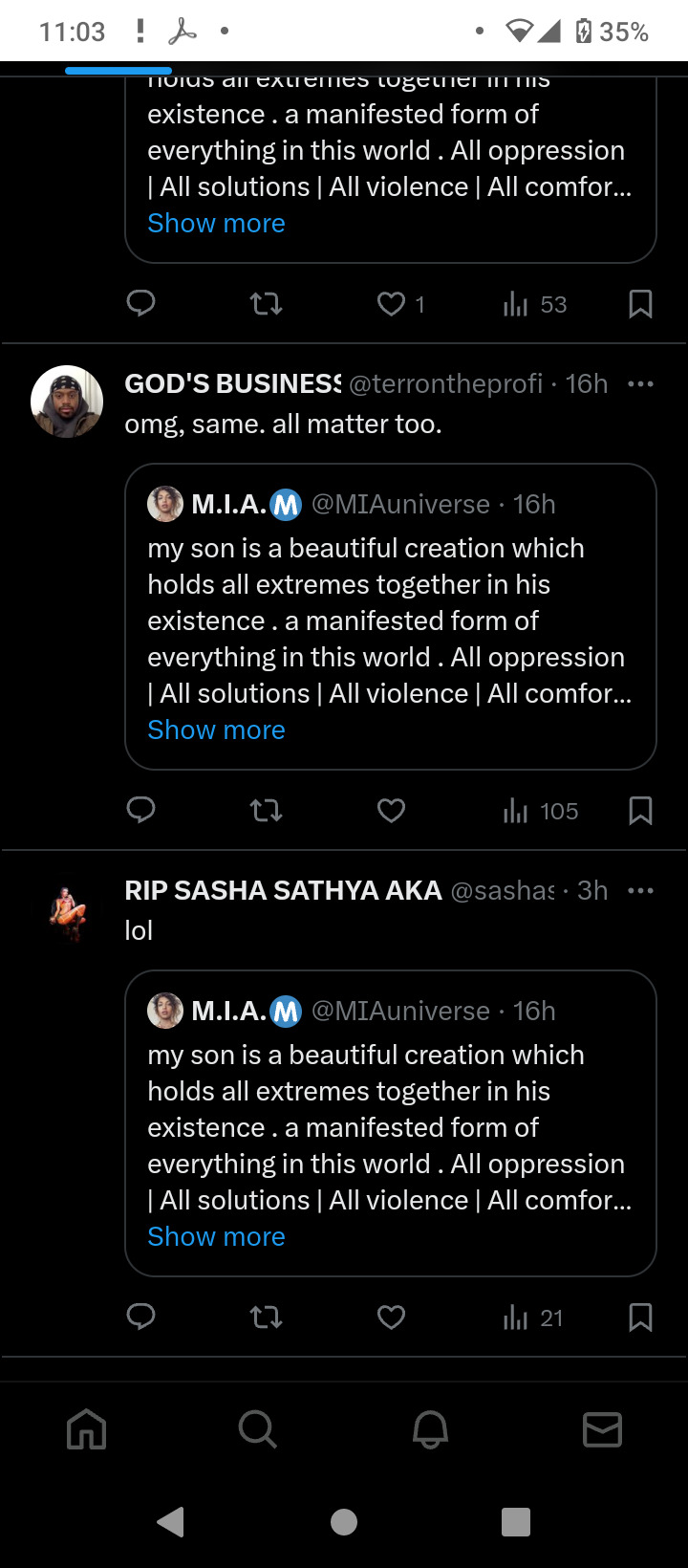
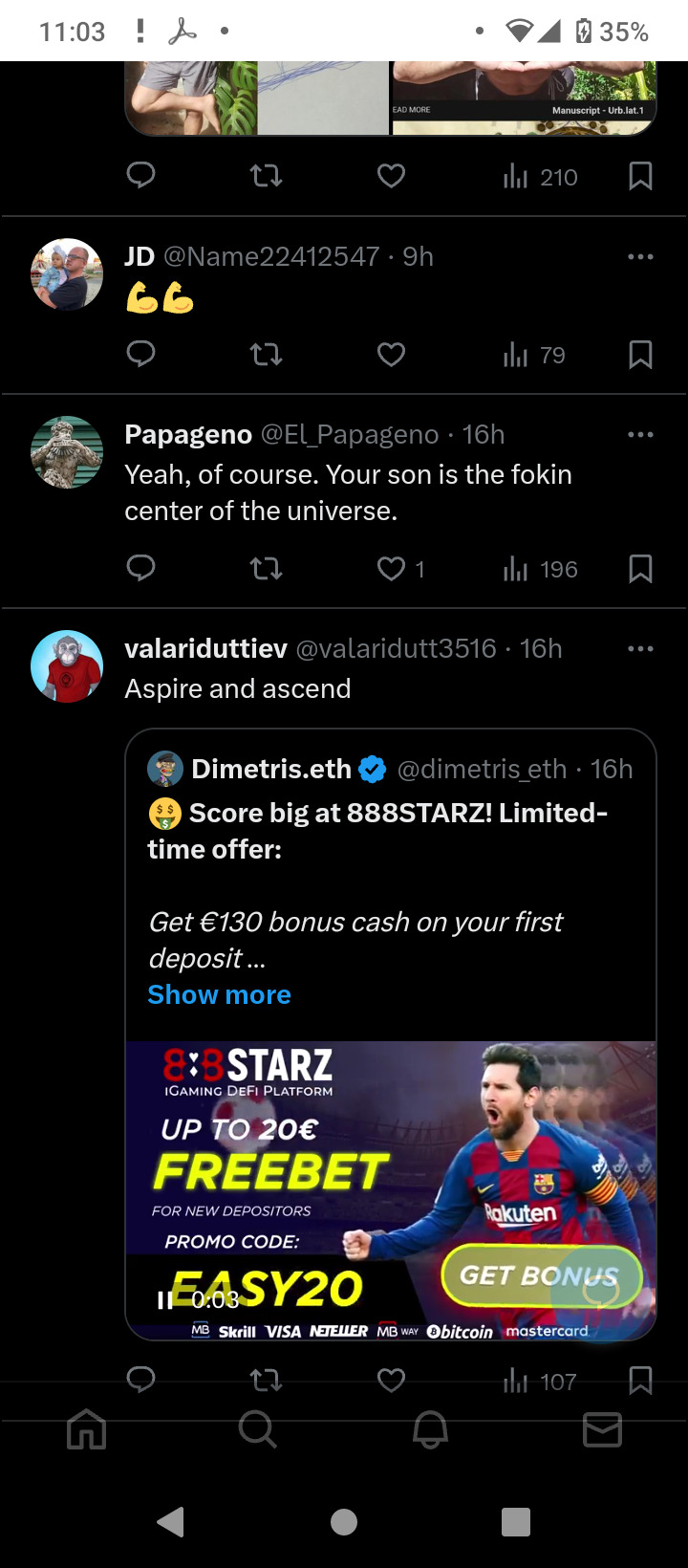
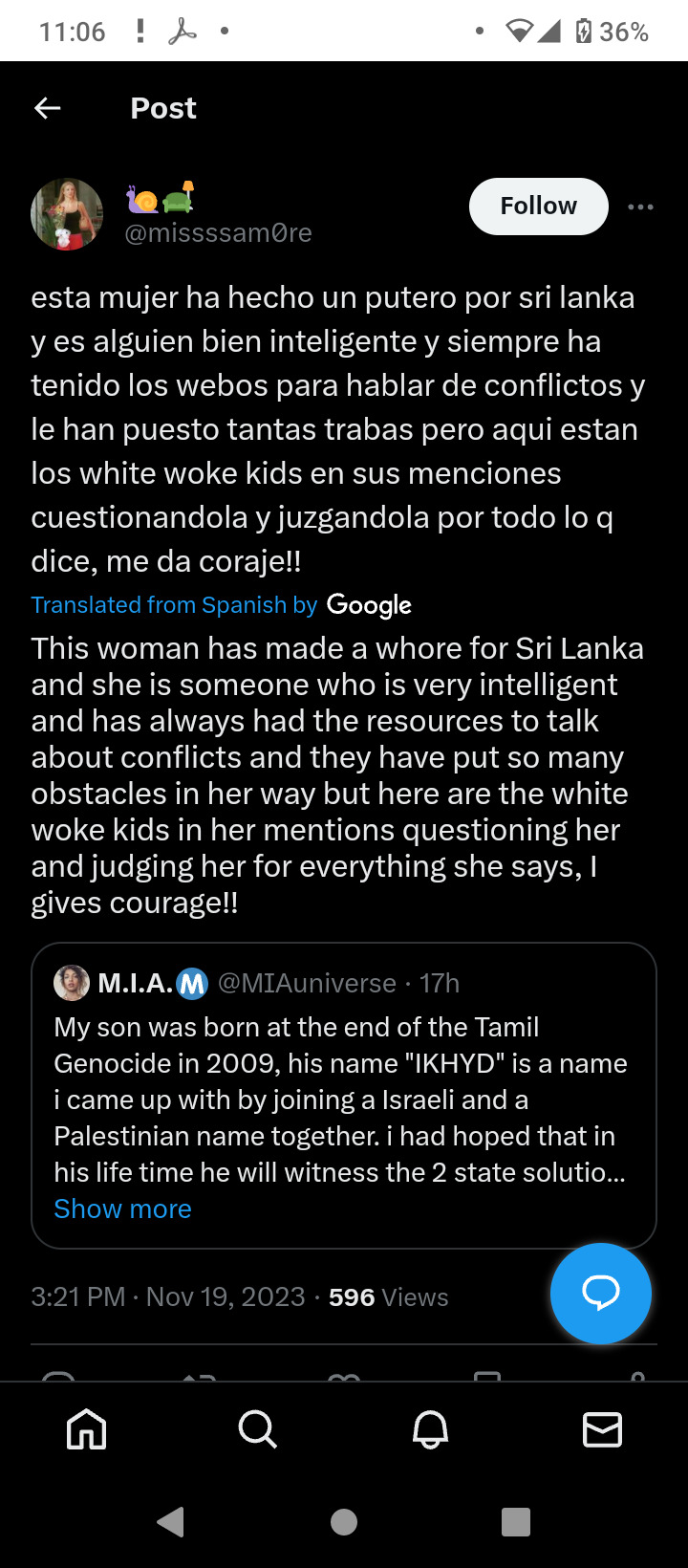

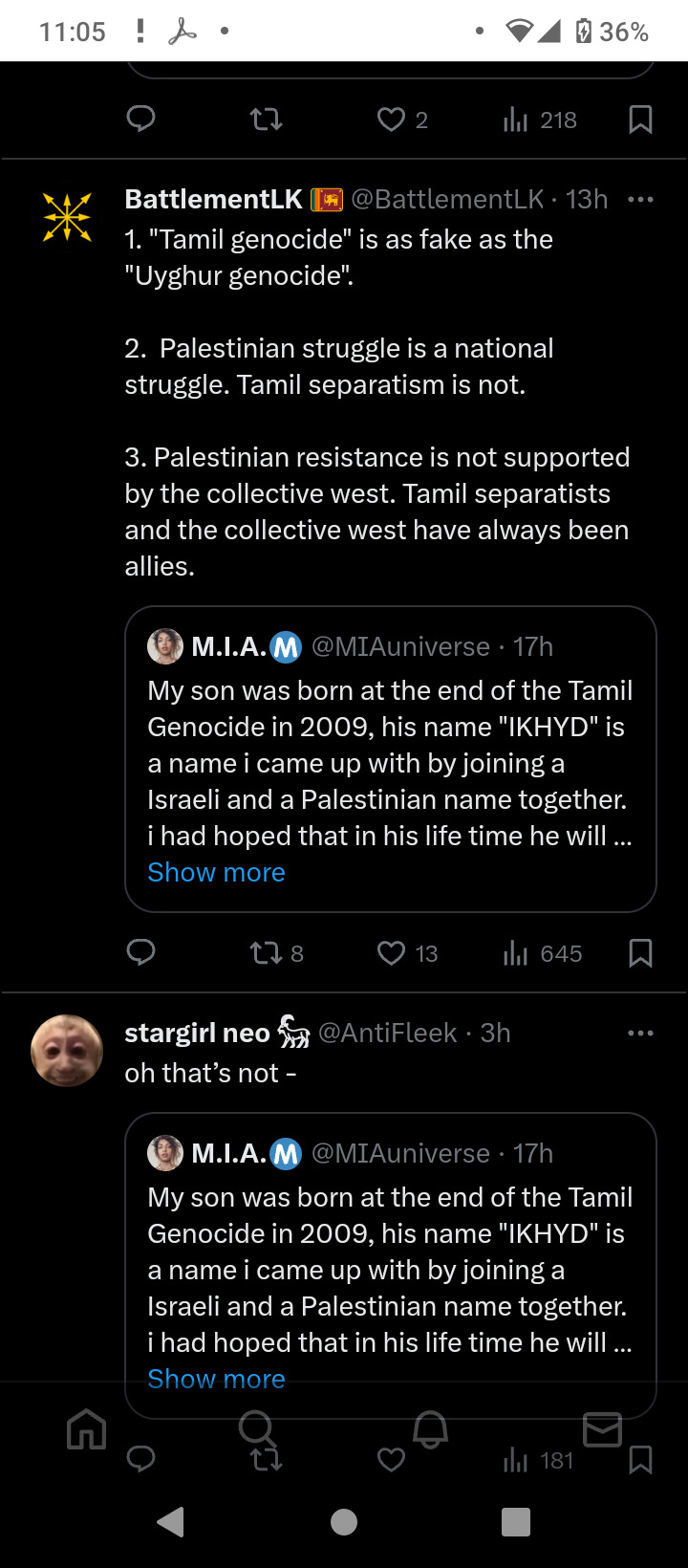
#m.i.a#multi racial children#multi ethnic children#tamil#south asian#african#jewish#genocides#genocide denial#tamil genocide#uighur#u#uyghurs#uyghur genocide
2 notes
·
View notes
Text
Listen I like black Ariel and black Tinkerbell conceptually and I'm a fantasy enjoyer so I don't necessarily think there's anything inherently "dehumanizing" about nonhuman fantasy races as in I don't have trouble relating to them or really see them as "other" when I'm watching/reading media they appear in.
That said I think it's real interesting that when Disney is deciding which characters get to be black this time around they made Belle and Cinderella who both are human with no qualifications throughout their movies white and then decided to racebend the mermaid and the fairy.
Again, not necessarily mad about Black Tink or Black Ariel. Just curious as to what goes into deciding which live action princesses are black and why.
#Disney#actually hilarious that me and my friends are putting more thought into the racial implications we make#in a comic based on our fucking d&d game#than the largest media corporation in the world is in multi billion dollar movies
8 notes
·
View notes
Text
I work and advocacy and why would someone admit to not wanting to hire someone whose a white cishet male to their completely white management? It just makes me and every person of color get side eyed. I hate advocacy work it’s pure stupidity what if they pass that on to your next boss?
#like do white people admit this among themselves about us?#what level of turbo woke is this it’s so infriuriating#even if you felt that way why would you admit it?#gag the whole team is like white girls one Asian and one Black Refugee and I know that refugee did Nawt say that#and like two multi racial girls
6 notes
·
View notes
Text
The old man yaoi debate stuff is so funny and especially with Miguel O'Hara because all the people that are sane draw him as he looks and all the insane people are saying 'I love grandpa' meanwhile producing art of him that looks like a freshly waxed n polished 19 year old instragram influencer with literal yaoi jaw and chin
#how the hell do these people get multi k likes on their art#the art style itself isn't bad but the execution.........#oh and the total denial of racial features in favor of a 'beautiful' face#GIRL WHAT
6 notes
·
View notes
Text
Max Payne 3 Fan Art

#fan art#wallpaper#max payne#max payne 3#brazil#sao paolo#degeneracy#violence#multi-racial societies#diversity#ransom#gang wars#crime#vhs sex#tolerance#neoliberalism#democracy#poverty#zionism#zog
3 notes
·
View notes
Text
Professionalizing the Police
"For a full day in August 1957, Los Angeles radio station KMPC celebrated "Chief Bill Parker Day." At a luncheon with city boosters at the Biltmore Hotel, a city councilman pronounced the city's police chief "a model for police and administrators throughout the world." That same month, Parker sat in the law office of attorney George Vaughn to give a deposition - the LAPD was facing a lawsuit for ten cases of police brutality brought by Vaughn's client, the NAACP's Legal Redress Committee. Unfazed, Parker used the occasion to charge Vaughn with "evil intent in this whole situation." He claimed that the committee was trying to "drive the whole Police Department out of the city of Los Angeles" and said that this sort of "unholy harassment underscored the very necessity of police officers. "We have been getting along fine until you got here," he concluded." Parker's response reflected the mindset of a police department that acted with almost complete impunity yet saw itself as under siege from the communities it terrorized. Without a hint of irony, Parker would later describe police officers as the "greatest dislocated minority in America."
Many of the same surveillance technologies that generated the dialectics of discipline in New York prisons during the late 1950s were being mirrored on the streets of major cities, including New York and Los Angeles. During the postwar years, policing was reshaped by a national impetus toward professionalization led by reformer O. W. Wilson and his protégé, William Parker. In 1950, Parker began what would become the longest tenure of any police chief in Los Angeles, ending only with his death a year after the 1965 revolt in Watts. Kelly Lytle Hernández concludes that by the 1950s, "local activists had gathered enough evidence to categorically describe police violence as a tactical assault on Black life in the city." Los Angeles's notoriety was due not only to the scope and size of the city's policing apparatus but to Parker's role in disseminating it as a model for other cities: "The LAPD's postwar model of policing routinely served as a standard for departments across the country." A master salesman, in Parker's first few years on the job, he gave over a thousand speeches to business groups and civic organizations promoting his ideas about crime and policing, and he is credited with coining the phrases "thin blue line" and "to protect and to serve." Parker justified the violent police occupation of Los Angeles's communities of color through the use of racial crime statistics and masked the department's hases through an aggressive public relations campaign that promoted a modern, professional image.
Police professionalization at its most prosaic meant wrestling autonomy from machine politicians while narrowing the domain and scope of policing to the "expertise" of crime prevention. Police chiefs set about creating universal standards and bureaucratized procedures meant to engender public trust and deter incursions into police discipline from politicians and civilians alike. Significantly, professionalization also meant proactive policing: wiretapping, racial profiling, data gathering, and, of course, discipline. "Perhaps most importantly," Max Felker-Kantor adds, "professionalization ensured the LAPD operated independently from political influence."
No police units were better equipped to do this than the anticommunist Red Squads in cities such as Chicago, Philadelphia, Los Angeles, and New York. Felker-Kantor describes the Red Squads in Los Angeles as a "John Birch Society dream of right-wing, pro-business, white-supremacist politics backed by an all-out attack on progressive social movements and civil rights activists." So palpable was this dream, that some have estimated two thousand Birchers within Los Angeles law enforcement during Parker's first decade as chief. The special squads formed during the Cold War were swiftly expanded to encompass what The Hate That Hate Produced had defined as the rise of "Black hate" and "Black supremacy." Indeed, early surveillance reports conflated Black Nationalism and communism, branding them equally "subversive." In 1957, one state investigator for the Bureau of Criminal Investigation (BCI) in New York called the Nation of Islam a "pink organization consisting of colored people." By 1960, after the documentary had aired, the BCI shifted to calling the group a "nation-wide supremacy movement."
While the New York Police Department had no figure as iconic or enduring as Parker during the 1950s, its Red Squad police intelligence unit - BOSS - had rescued itself from postwar obscurity and become an evangelist and a model for national counterintelligence programs by the 1960s. Touring as "proselytizers for the cult of intelligence," BOSS was described by one scholar as akin to the Green Berets, a special operative unit that touted itself as the "finest of the finest" and "total professionals." Most importantly, just as monthly surveillance reports from New York prisons radiated outward and modeled national policy, BOSS disseminated information to outside agencies." Tony Bouza, who began his service for the agency the same year that Defossett first infiltrated the Nation of Islam, recalled an agent who funneled information daily to J. Edgar Hoover and the FBI. In those days, he recalled, "we really rarely got anything from them and they got quite a bit from us."
William Parker was no stranger to police intelligence. When he first joined the LAPD in 1927, he acted as an informant by infiltrating radical groups. Soon after taking office, he declared the files of the Intelligence Division the property of the Chief of Police." He believed that the effectiveness of surveillance outweighed any infringement on civil liberties. In 1954 he defended surveillance using hidden microphones and recording equipment and when the California Supreme Court ruled evidence obtained through such unconstitutional means inadmissible, he condemned the decision as "catastrophic" to "efficient law enforcement." Another staple of Parker's department was its autonomy. Although he frequently closed ranks with white politicians during times of crisis, Parker remained insulated from public and government scrutiny: despite long-standing demands for a civilian review board, he was shielded by a city charter that granted the chief of police civil service protection and full power over the discipline of officers.
When Parker laid out his blueprint for the role of the police force in community relations at the 1955 Annual Conference of the International Association of Chiefs of Police, he proudly remarked that "Los Angeles has not experienced an instance of organized group violence in the past twelve y attributed this long period of calm largely to the "professionalization of its police department."" His address framed policing through a liberal logic in which diversity was articulated as everyone's "right to be different." "We are all minority group members," he told the audience, "any one of which can be, and often has been, discriminated against." Parker's justification for the overbearing presence of police in communities of color rested on crime statistics. He explained that the reason for the heavy deployment of police in neighborhoods inhabited mainly by people of color was "statistical - it is a fact that certain racial groups, at the present time, commit a disproportionate share of the total crime." His speech simultaneously defended over-policing and race-based crime statistics and advanced the pretense of color blind law enforcement that disregarded race as a meaningful category of analysis.
Parker closed his address by offering an anecdote that embodied his professionalization argument: human relations and community training could eradicate racist policing, if not racist police. He described an "old school" officer, recruited "long before psychiatric examinations were instituted," who walks a beat in this new "racial melting pot" of Los Angeles. Despite carrying with him "the maximum number of racial and religious prejudices one mind can hold," this officer has "memorized every maxim, every scientific fact, every theory relating to human equality." The punchline of Parker's story was that for this "old school" officer, his "intolerance has become a victim of enforced order-habit has won out over belief." In other words, racist police could become disciplined to perform nonracist policing.
The framework for The Hate That Hate Produced mapped easily onto this sort of thinking. Parker often justified "the police department's discrimination with reference to other discrimination." Just as the documentary portrayed Black Nationalism as a type of racism that inevitably arose in reaction to white racism, Parker understood all groups to be suffering from different types of "minority" status, even - or especially - police. Parker's theories of professionalization as a means to eradicate racist policing were disseminated in LAPD training bulletins. Satirical cartoons illustrated Parker's points, teaching officers that police brutality was not confined to the use of force but that "complaints of so-called 'police brutality' are fre quently found to be complaints concerning offensive language or improper attitude." The bulletin used slang directed at police to show that it could be training as a means of professionalizing police practices was designed received as hostile when used by outsiders. Parker's outline of human relations to disguise the specificity of police violence against communities of color by demonstrating that anyone could be a victim of hatred. Some of Parker's ideas mirrored demands made by the NAACP and other Community groups calling for law enforcement reform. His focus on human relations training and a racially diverse police force that could maintain a better rapport with the communities it policed echoed the goals of many in Los Angeles and New York who were fighting for police reform. But liberal calls for the professionalization of police generally resulted in more police with greater impunity. As later described by Naomi Murakawa, this adhered to the dynamic in which modern police departments and liberal reforms served to cement the notion that police brutality could be solved through more procedures and training, framing "racial violence as an administrative deficiency" rather than a structured and intentional outcome." As Parker contended in his 1955 address, "We are not interested in why a certain group tends toward crime, we are interested in maintaining order.... Police deployment is concerned with effect, not cause." He was content to continue the vicious cycle of overpolicing and racially biased crime statistics, each justifying the other.
By 1960, after the death of a Black teenager at the hands of Los Angeles police the previous summer, the possibility of a police review board had set off a polarizing debate in Los Angeles. The proposal was the product of a multiracial coalition that brought together the ACLU, the NAACP, the California Democratic Council, and what the Los Angeles Times referred to as "several Latin or Spanish groups." The proposal called for a five-person board to be appointed by the mayor with approval from the city council - and allotted $500 each to citizens harmed by police misconduct. The idea of a police review board was invigorated by an onslaught of criticism of Parker for maintaining a department rife with discrimination, the use of excessive force, and racial profiling. His defense rested on a combination of crime statistics, anti-immigration rhetoric, and social scientific notions of racialized criminality. This built on a postwar racial liberalism in which the language of biological racism was often replaced by cultural determinism following the findings of anthropologist Franz Boas. Criminologists and law enforcement officials, as Khalil Muhammad has shown, used crime statistics to refashion Blackness into a "more stable racial category in relation to whiteness" and, in effect, a marker of criminality."
Parker's comments during a two-day hearing before the Federal Commission on Civil Rights in 1960 demonstrate the ways in which cultural notions of race and criminality justified racialized policing. "Flanked by a battery of aides carrying charts," Parker argued that African Americans, Latinxs, and Asians all committed crimes at disproportionate rates compared to their white counterparts (11 times, 5 times, and 3 times, respectively) but neglected to mention the disproportionate policing of the neighborhoods where people of color were concentrated. Demonstrating that he had moved away from discredited notions of innate criminality, he called these statistics a reflection of a "conflict of cultures." Rather than seeing housing segregation as one cause of these disproportionate statistics, the police chief deemed these "dislocations" primarily a problem of "assimilation." In language reminiscent of Progressive-era anti-immigrant rhetoric, Parker claimed that the city had been plagued by people "shipped here by officials of other localities who want to get rid of them." He charged that ultimately the police were the "dislocated minority," complaining that no "one is concerned about the civil rights of a policeman."
- Garrett Felber, Those Who Know Don’t Say: The Nation of Islam, the Black Freedom Movement, and the Carceral State. Chapel Hill: The University of North Carolina Press, 2020. p. 88-92.
#lapd#los angeles#new york#scientific policing#police reform#police abolition#racist policing#racism in america#multi-cultural police#liberal reform#black nationalism#black freedom struggle#racial segregation#african american history#those who know don't say#reading 2023#red squad
1 note
·
View note
Text
Raven Solomon | Leading Your Parents | 25 Rules to Effective Multigenerational Leadership for Millennials & Gen Z
Young professionals entering the workforce today need to be prepared to lead not just their peers, but cross-generational teams consisting of everyone from Gen Zers to Baby Boomers. And the reality is college doesn’t teach the soft skills necessary to do it. Raven Solomon This book does. In Leading Your Parents, Raven Solomon, an entrepreneur, keynote speaker, and former executive manager who…

View On WordPress
#author#black#DEI#diversity#emotional intelligence#equity#Gen Z#generations#inclusion#inclusive leadership#leader#leadership#Leading Your Parents#management#multi-generational team#racial equity#Raven Solomon#systemic racism
0 notes
Photo
Tony Hawk literally built several skateparks and restored historical homes in a historically black neighborhood. He constantly gives back to the community and attends parades in Detroit as well. He probably does more activism than you.

#tony hawk#i dont like this kind of talk bc its stupid#like lets make everyone the enemy#further dividing ourselves#its not funny to me#his response was funny bc he's chill like that#but idk#i dont like piling on pll bc of their race#especially when they're great people and you have no idea what you're talking about#race#being someone from a multi racial#multi cultural background#tthis isnt it
2K notes
·
View notes